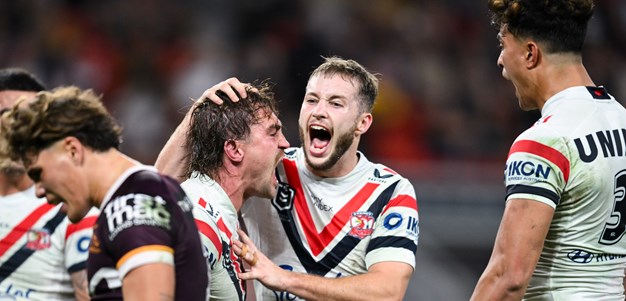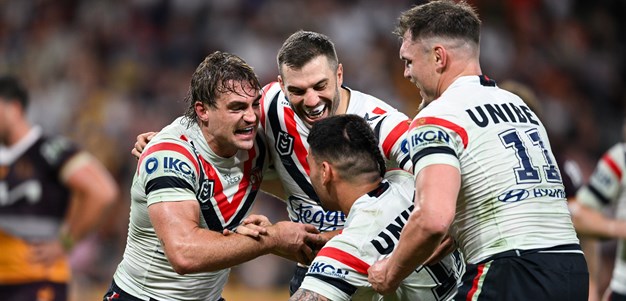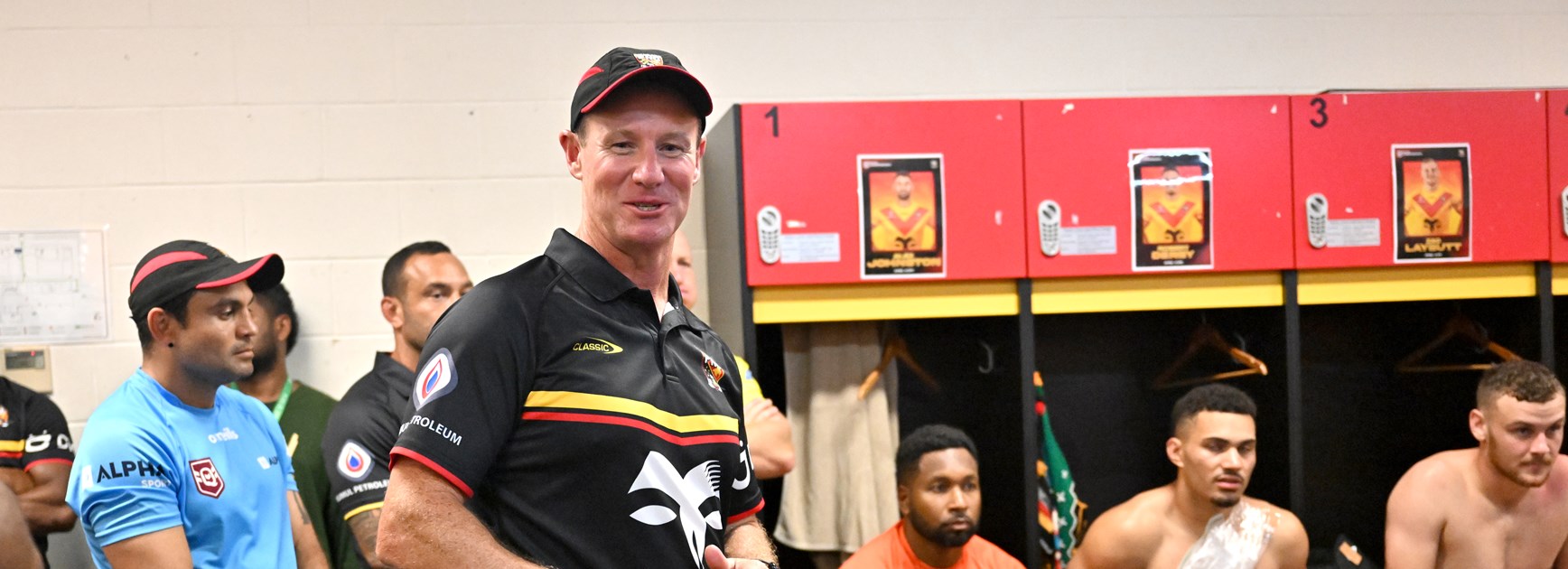
Justin Holbrook had heard the stories from his grandfather about how the “Fuzzy Wuzzy Angels” helped Australian soldiers in Papua New Guinea.
However, it wasn’t until the Kumuls coach visited the Kokoda Track that he fully understood the significance of their role in defending Australia during World War II.
Holbrook, who was player of the match in the first ANZAC Day game for Sydney Roosters against the Dragons in 2002, took the PNG team to the Kokoda Track and Bomana War Cemetery during last year’s Pacific Championships.
Now a member of the Roosters coaching staff, Holbrook will this year reflect on the contribution of the 16,000 Papua New Guineans recruited to assist Australia’s war effort, as well as the service of his grandfather, Laurie Thwaites.
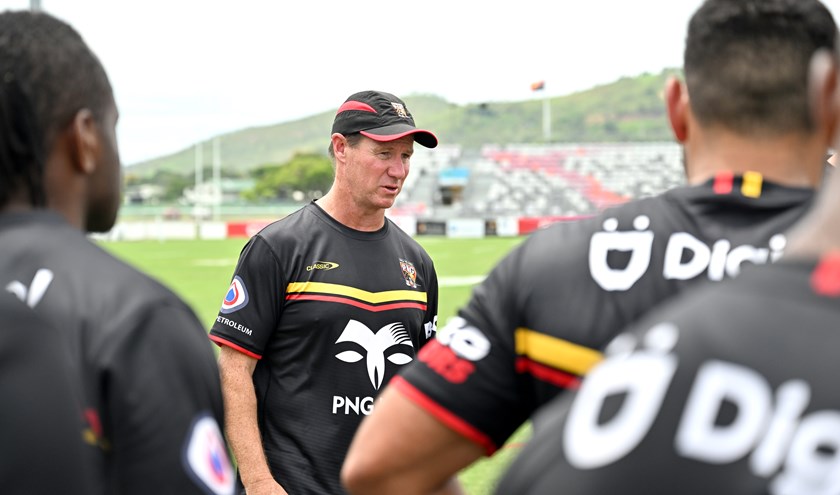
“My pop and my wife’s pop went to war in Papua New Guinea, and I remember them telling us how important a job the Fuzzy Wuzzy Angels - the Papua New Guineans - were for them,” Holbrook said.
“They bought in food and medicine and firearms and everything along the Kokoda Trail to help the Australians. My pop told us how appreciative he was of them.
“To hear the stories from my Pop and then to have the opportunity to go to the Kokoda Track with the team last year and hear again how important a role the Papua New Guineans played in defeating the Japanese was huge for me.”
The Kokoda campaign lasted from July to November 1942, with about 56,000 Australians involved.
About 625 Australian servicemen were killed and more than 1,600 wounded - the exact number remaining unknown.
Yet the casualties would have been much higher without the “Fuzzy Wuzzy Angels”, who carried stretchers through inhospitable terrain and tended to the injured or sick, often while fighting raged around them.
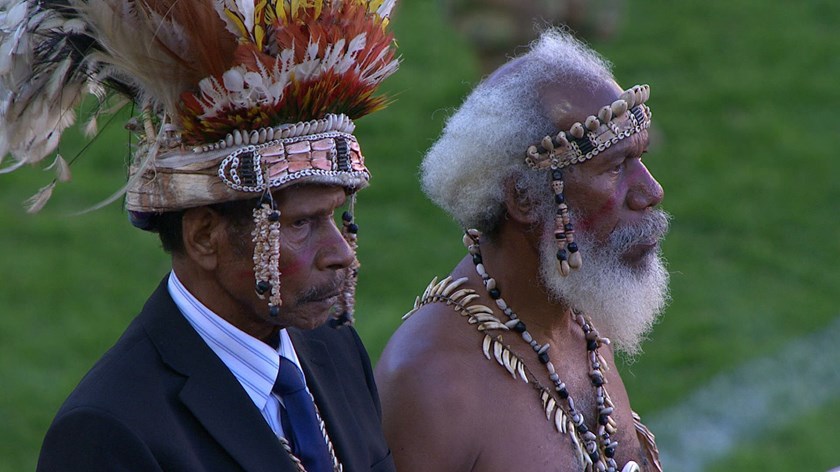
“To stand at the end of the Kokoda Track and look at how hilly it was and how long it was, and how much of a jungle that they had to get through, it just made you think about how hard it would be just to walk it, let alone having to fight along the way to defend your life and your country,” Holbrook said.
“There is a huge connection between Australia and Papua New Guinea and that had a massive impact on the relationship between the two countries.”
Holbrook’s first game in charge of Papua New Guinea was last year’s annual Prime Minister’s XIII fixture with Australia, which was first played in 2005 and in 2023 included men’s, women’s, schoolboys and schoolgirls matches.
PM’s XIII PNG v AUS
The PM's XIII program was expanded with the support of the Australian Defence Force, who also assist the NRL to deliver education for coaches, referees and sports trainers across the Pacific.
The ARLC’s Pacific Strategy includes the Pacific Championships, which began last year and is scheduled to be played each year after the NRL and NRLW grand finals with the backing of the Australian Government.
Australian Prime Minister Anthony Albanese and his PNG counterpart James Marape this week spent two days walking the Kokoda Track before attending the annual Anzac Day Dawn Service at the Isurava Memorial Site.
Many of those killed at Isurava, the scene of some of the most intense fighting in the Kokoda Trail campaign, are buried at the Bomana War Cemetery, which Holbrook also visited with the Kumuls.
The respectfully maintained cemetery contains the graves of 3069 known and 237 unknown Australians killed during the fighting in PNG, along with 443 Allied soldiers, sailors and airmen.
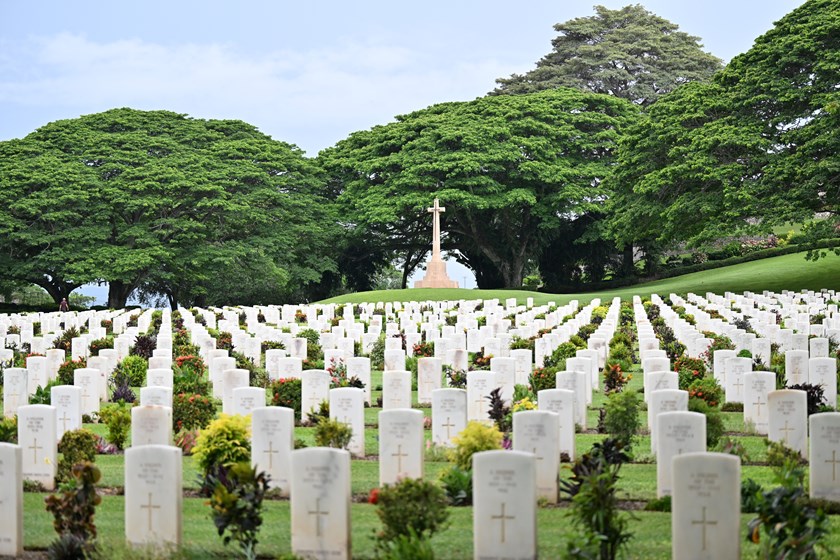
Holbrook said learning the ages of many of those buried at the Bomana War Cemetery bought home the sacrifice young Australians had made to stop the Japanese incursion into the Pacific.
“I heard some great and very brave stories about Australians, as well as Papua New Guineans, who unfortunately for a lot of them sacrificed their lives to make sure we live the way we do today,” he said.
“It was very eerie and made you very appreciative when you hear about these 16-year-old kids faking their age to go and serve their country and help defend it.
“To lose their lives at such a young age to look after our future and safety was a huge sacrifice and it took a huge collective approach by the Australians and Papua New Guineans to make sure that happened.”
After playing in the first ANZAC Day game, won 24-20 by the Roosters against the Dragons, Holbrook said he was pleased to see how big an event the match has game.
On that occasion, a crowd of 20,588 watched as Holbrook scored a try and won man-of-the-match but the annual fixture at Allianz Stadium is now regularly sold out.
A showcase from day one: Fittler and Barrett reflect on the first ANZAC Day game
“At the time we didn’t know how big it was going to be,” Holbrook said. “It was just a huge honour to play, and to acknowledge the occasion. That’s what I remember more than the game.
“We went out onto the field for the playing of The Last Post and there were fighter jets were flying over so it was awesome to be a part of that.
“There were some of the veterans at the ground, it was a really special day to be able to honour the ANZACS and play our sport.
“It is an exciting game to be involved in, and it’s exciting for everyone who watches.”

